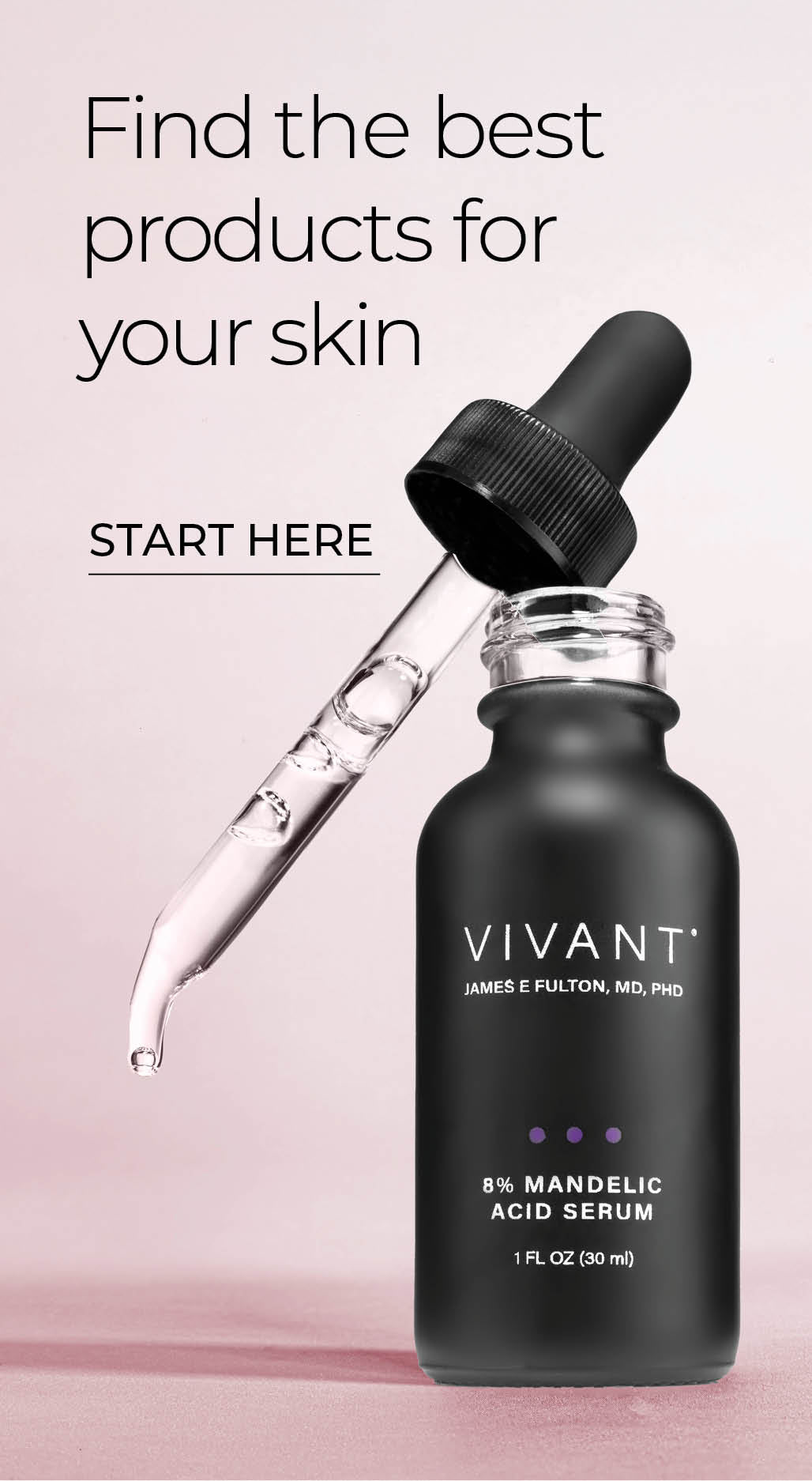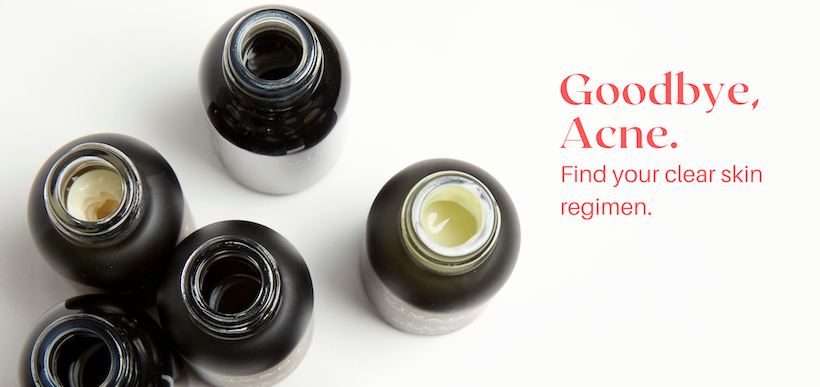Four Steps to Even Tone

Skin is a reactive organ affected by everything from hormones to UV. Any injury to the skin, even an inflamed pimple, triggers the skin’s defense mechanism: melanin. Over time, all these insults to the skin add up, resulting in patches of excess pigmentation and uneven tone.
With such a complex system of triggers, is even tone even possible? Definitely. Achieving and maintaining even tone requires a regimen focused on fading surface pigment and preventing pigment formation, and you can do it with four basic steps. Here’s your simple four-step guide to even tone.
Exfoliation
For achieving and maintaining even tone, exfoliation is critical. The top layer of the skin, the epidermis, is mostly dead skin cells that are constantly shedding off and being replaced as new healthy cells make their way to the surface. A complete cell cycle takes about thirty days. Exfoliation speeds the process, revealing brighter, smoother skin sooner. Another benefit of exfoliation? The clearing of dead skin cells and oil from pores, reduces the chances of breakouts and inflammation that can fuel hyperpigmentation.
What’s the best way to exfoliate? You can do it with physical agents—granules, a scrub, a brush, a buffing pad—or chemical means—retinoids, alpha hydroxy acids, enzymes, or peels.
While not technically an exfoliator, Vivant’s patented vitamin A propionate speeds the skin’s natural 30-day cell turnover cycle to about 14, disrupting the transfer of pigment to skin cells and breaking up surface pigment.
Acids remove the upper layers of dead skin cells, leaving skin renewed, brightened, and free of cellular debris. Mandelic acid is an excellent choice when even tone is your goal because, in addition to its cell renewing action, it’s also an inhibitor of the enzyme responsible for melanin production.
Other good choices are:
- Lactic acid (gentle exfoliator that smooths texture)
- Kojic acid (a melanin inhibitor with photoprotective effects)
- Glycolic acid (a potent accelerator for cell turnover)
One of the best tools in your even tone arsenal is our Daily Repair Pads. These textured mini-peel discs are soaked in a glow-boosting cocktail of exfoliating acids to open up blocked pores, remove surface debris, and help disperse pigment. Plus, they enhance the absorption of your corrective serums.
Brightening Ingredients
Brightening agents work in the deeper layers of skin to interrupt pigment production and block it from reaching skin’s surface. They may also have an antioxidant effect that protects against pigment-inducing UV or environmental damage. Here are some of the top performers.
Vitamin C is known for its ability to prevent and repair UV damage. It’s an antioxidant powerhouse that interacts with copper to inhibit the melanin-stimulating enzyme tyrosinase, reducing pigment formation and encouraging a brighter, more even tone. It also has potent photoprotective effects that block melanin triggers. It gets an exponential boost when paired with cell defending vitamin E as in our Pure C + E antioxidant serum.
A staple in many Vivant formulas, niacinamide blocks melanin from reaching the surface of the skin and prevents additional UV damage. Its cell renewing properties can also help speed the reduction of existing pigmentation. Niacinamide is an all-around advocate for healthy skin, boosting ceramide production, contributing to healthy cell function, and reducing inflammation.
The undisputed champion in the pigment wars is hydroquinone, especially when combined with vitamin A propionate. For stubborn pigmentation issues, Vivant’s True Tone Serum is at the top of the food chain. This targeted serum combines transformative vitamin A with hydroquinone (2%) and kojic acid. It gets an antioxidant and anti-inflammatory boost from grape seed oil, oat proteins, and aloe leaf.
Peels
Peels (done by your aesthetician) rely on acids to remove the top layers of skin. The exfoliative effects spur cell regeneration, kickstart collagen, fade discoloration, and peel away impactions to rapidly improve texture and tone. A medium depth peel like Vivant’s ProPeel® brings rapid retexturing (think the shedding of a snake’s skin) for some dramatic results. Enzyme peels are gentler, but still instantly brightening.
If you can’t get in to see your aesthetician, here’s a recipe for an at-home micro-peel. Scrub your face with Mandelic Acid 3-In-1 Exfoliating Cleanser and leave it on for 10-15 minutes. Rinse and apply your favorite serum, then layer either Algae Soft Mask (for dry or normal skin) or Sulfur Clay Mask (for oily or resistant skin) on top. You’ll see a micro-peeling effect in the next 24-48 hours.
Sunscreen
Daily sunscreen is a must to protect against the melanin-triggering effects of UV. Day Treatment Lotion SPF 15 is feather-light, non-comedogenic, and goes on clean without greasy residue, so it won’t smudge your makeup. You can even mix it with a little mineral powder to make a sheer foundation. Layer on top of Pure C+E for a photoprotective boost.
How long does it take to fade dark spots?
Pigment is rooted deep in the skin, which means the process is not fast. It has to travel up to the surface to be sloughed away layer by layer. Following these four steps will accelerate the process and maintain your even tone. It takes four to six weeks to begin to see results. Your equation for success: Regimen + Consistency + Time.


Comments